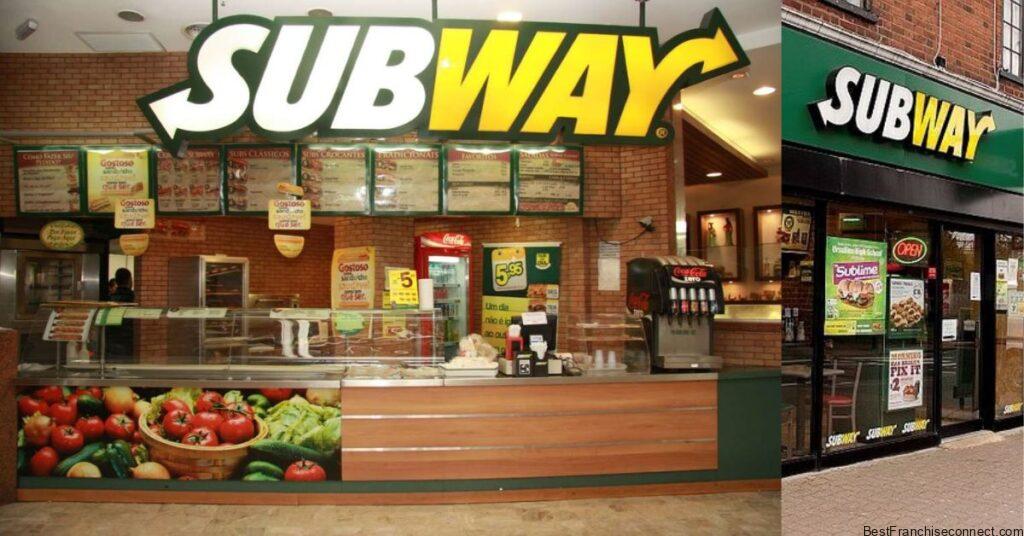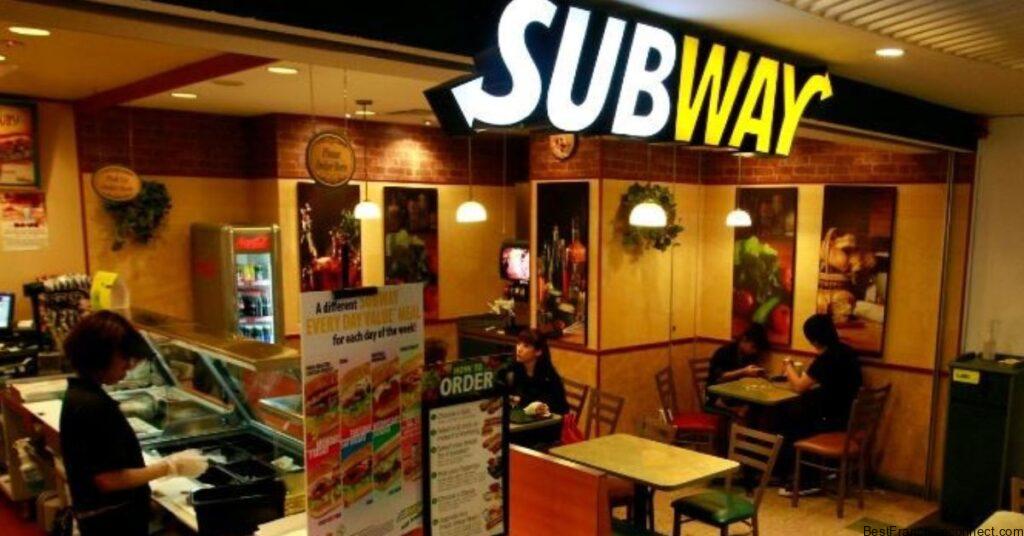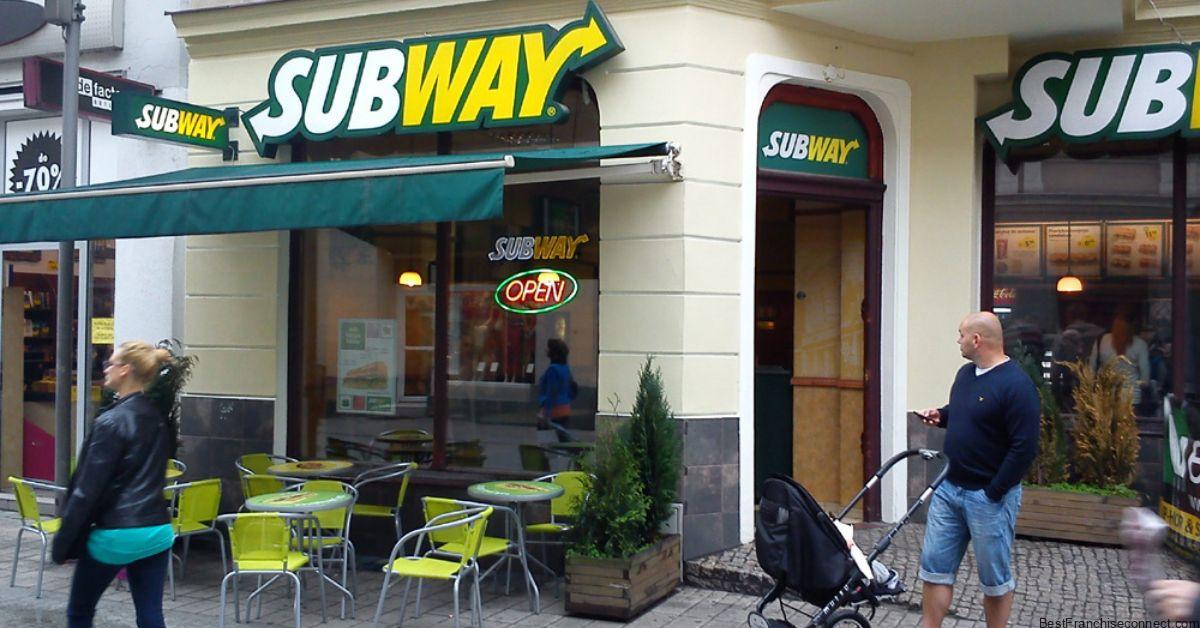While opening a Subway franchise is a great idea as a business venture towards a better life, it entails costs in several ways, impacting your entire financial career. This article looks into the feasibility of a business venture in Subway. It outlines the following discussions: Subway franchise model, costs involved, profit opportunities, and qualifications that one needs to possess to acquire a Subway franchise. Let’s know each of these aspects in detail:
Table of Contents
Subway Franchise Model
Subway’s franchise model is a form of a chain of stores; this makes it easier for individual owners to manage different Subway restaurants by being guided by Subway’s corporate structures. Subway is a relatively young fast-food restaurant chain that originated in 1965 and has had significant growth in its outlets worldwide; the restaurants are mainly famous for their submarine sandwiches that the buyer can customize, and fresh ingredients are used in their preparation. The advantages associated with franchising for this organization and franchisees include the Subway brand name, recipes, established working systems, and constant support.

Key Details of Subway Franchise
- Brand Name: Subway
- Industry: Food Industries
- Number of Outlets: 36,592 outlets
- Franchise cost: 6 to 12 lakhs or $116,400 – $263,000
- Profit Margin: 27 to 45%
- Official Website: https://www.subwayfranchise.com/
Subway Franchise Cost
The costs involved in starting Subway include the first franchise fee, which could average between INR 6.5 lakhs ($10,000 to $20,000) depending on factors such as the proposed location and size of the restaurant. The total initial Subway franchise costs are between INR 6 to INR 12 lakhs ($ 116,000 and $ 263,000), depending on factors such as the business site.

| Expense Category | Estimated Cost Range in India | Estimated Cost Range |
| Franchise Fee | INR 6.5 lakhs | $15,000 |
| Equipment and Signage | INR 6 to INR 8 Lakhs | $69,400 – $197,000 |
| Leasehold Improvements | INR 1 to INR 2 Lakhs | $0 – $150,000 |
| Initial Inventory | INR 1.2 to INR 2 lakhs | $3,000 – $8,000 |
| Miscellaneous Start-up Costs | INR 2 to INR 3 lakhs | $28,000 – $48,000 |
| Total Initial Investment | INR 6 to INR12 Lakhs | $116,400 – $263,000 |
Moreover, apart from the initial fee of INR 6.5 lakhs ($15,000), the ongoing fees include royalties of 8% of the gross sales made by the outlet and an obligation to partially fund national and local advertising campaigns that help in marketing the brand.
Subway Franchise Profit

Since profitability is an important aspect that a potential franchisee would look at to determine the feasibility of investing in the Subway franchise, let’s discuss that aspect. Actual profits can fluctuate largely depending on location, efficiency, current market trends, or other circumstances.
Profit Margins
The Subway franchise owners need to set goals to achieve operation margins of around 10-20% of their gross sales. These margins show the level of revenue that the company can keep after all franchise operational costs such as wages, rent, taxes, advertising and overhead costs, royalties, and other operating expenses have been deducted.
Cost Breakdown
To achieve profitability, franchisees need to manage several ongoing costs:
Royalties: Subway has been collecting a royalty fee of 8% of sales. This is to help pay for the use of the Subway brand name and also to get some well-equipped corporate services. For instance, if a Subway franchise earns $10,000 in Sales in one month, then $800 of it will be paid to Subway as royalties.
Advertising Fees: On top of royalties, franchisees make contributions to the total advertising fund and localized advertising fund. This is usually an additional 4.5% of gross sales. Using the same example, $450 would be allocated towards advertising efforts.
Operational Costs: Aside from the translation and interpreting services, operational costs include lease, electricity, wages, cost of food served, and other expenditures. These costs may, therefore, differ depending on various factors, such as the premises’ geographical location, the lease’s duration, and human resources implications.
Example Scenario
Let’s consider a hypothetical Subway franchise location:
- Gross Sales: INR 10 Lakhs ($50,000) per month
- Royalties: 8%
- Advertising Fees: 4.5%
- Total Deductions: INR 80,000+ INR 45,000= INR1,25,000 ($4,000 (royalties) + $2,250 (advertising) = $6,250)
Net Profit Calculation:
- Gross Sales: INR 10 lakhs ($50,000)
- Total Deductions: INR 1,25,000 ($6,250) (royalties + advertising)
- Total Operational Costs: Let’s estimate operational costs at 60% of gross sales = INR 6 lakhs ($30,000)
- Net Profit: Gross Sales INR 10 lakhs ($50,000) – Total Deductions INR 1,25,000($6,250) – Operational Costs INR 6 lakhs ($30,000) = INR 2,75000($13,750)
Profit Margin Calculation:
- Net Profit Margin: $13,750 / $50,000 * 100 = 27.5%
Here, the Subway franchise earns a net profit of INR 2,75000 ($13,750) per month, and the net profit margin is 27%. This particular example shows potential for generating a profit, but the actual amounts that may result from operations depend on many factors, including given operations, market conditions, and the efficiency of operating management.
Factors Influencing Profitability
Several factors can impact the profitability of a Subway franchise:
Location: Accessibility is one important characteristic that identifies a prime location with the ability to generate more sales and overall profits.
Operational Efficiency: Improvement in the costs, inventory, and people cost control are vital areas that can enhance profitability.
Customer Demand: Not only can insights into local customers and markets be used to increase sales, but they also enhance brand value.
Economic Conditions: Seasonal changes, cyclical movements, and market saturation also affect sales performance.
Requirements to Get a Franchise
To qualify for a Subway franchise, potential franchisees must meet certain criteria set by Subway:
Financial Requirements: Sufficient funds to finance the seed capital and other expenses needed to launch the business.
Business Experience: Minimum qualifications include good communication skills, basic math skills, and, though not mandatory, past experience in the restaurant business, either as a manager or an owner of a business.
Commitment: The Subway restaurant operator is willing to devote undivided attention to the restaurant’s management.
Training: The completion of Subway’s training program that includes elements like food preparation and handling, customer relations, marketing, and management.
Steps To Apply For Subway Franchise

Step 1: Collect data and determine if you’re a good fit.
Step 2: Go to the Subway official site and complete the franchise inquiry form.
Step 3: It is very important that one read through the Franchise Disclosure Documents with a lot of sincerity.
Step 4: Make sure that you have the minimum capital recommended by the U.S. Step 5: Small Business Administration, which ranges from $116,000 to $263,000.
Step 6: End the application process by completing and enclosing all the necessary documents of the franchise application form.
Step 7: Go for an interview and gain the approvals.
Step 8: Select the site and then bargain the rents.
Step 9: Execute the franchise agreement and enroll for the training.
Pros of Owning a Subway Franchise

- Established Brand Recognition: Getting involved with Subway means continuous franchisee support such as site selection and acquisition, lease negotiation, designing of stores and marketing, and general operations.
- Proven Business Model: Subway’s advantage of a well-established brand recognition and customer base due to increased visibility leading to greater traffic and sales generation.
- Menu Innovation: Using a prime research and development level, Channel Master Subway’s new menu items and promotions are geared towards meeting consumer demands.
- Comprehensive Training and Support: Initial training, as well as constant support in the work, Subway provides its employees and partners – both top managers and ordinary franchisees.
- Flexible Location Options: The flexibility of selecting between numerous sorts of locations, including free-standing stores, shopping centers, airports, and campuses, according to their geo-location and customer density.
Cons of Owning a Subway Franchise
- High Initial Investment: The start-up costs, such as franchise fees, equipment costs, and leasehold improvement costs, are capital intensive. So, you need to think about all of these aspects and then go for the agreement.
- Ongoing Royalties and Fees: There are continuing royalties to pay (usually 8% of gross sales), along with fees for national and local cooperative advertising funds, which affect franchisees’ profitability. This will cut down the total amount of money that you could have earned otherwise.
- Competitive Market: Competition within the fast-food segment can impact sales and profit, thus placing pressure on franchisors to make their products unique. So, either you need to be extremely strategic or bear some losses at times.
- Operational Demands: Commitment and time are needed to oversee daily operations such as staffing, supplies, and customer relations, as well as adherence to operational norms set by Subway.
- Market Risks: Subway’s performance and profitability depend on economic changes, customer preferences, and local market factors.
You May Like
Is Burger ka Theka Franchise Right for You? Cost & Profit in 2024
How to Start Monginis Franchise? Cost, Profit & Apply in 2024
How Affordable is Opening a Haldiram Franchise in India? in 2024
Conclusion
In Conclusion, Subway Franchise Cost, Profit, How to Start, Complete Details in 2024. Opportunities and risks are found in every investment, and with the Subway franchise, too, opportunities for business growth are accompanied by several risks. Recipients can find comfort in the well-liked brand, successful business formula, and vast network of suppliers behind the endeavors in the fast-food market. That said, before entering into a franchise agreement, potential franchisees should speak to their financial advisors and consider not only the costs of entering into a franchise system but also the workload that accompanies such a decision.
FAQ
What is the cost of a Subway franchise in India?
The total investment required to start a franchise of Subway is between INR 6 to INR 12 lakhs including franchise fee, setup cost, initial inventory, working capital, and others.
How much is a Subway franchise in Canada?
To Start a Subway franchise in Canada or the USA requires an initial investment between $116,400 to $263,000 including all costs.
What is Subway’s profit Margin in India?
As a franchisee of Subway can expect a profit margin between 27% to 45% on the total sales.

I am the admin and content writer for Bestfranchiseconnect. With over three years of experience, I provide valuable insights and engaging content on franchising. My commitment to delivering high-quality information ensures that Bestfranchiseconnect remains a trusted resource for franchise enthusiasts. Connect with me for expert advice and comprehensive guides.
